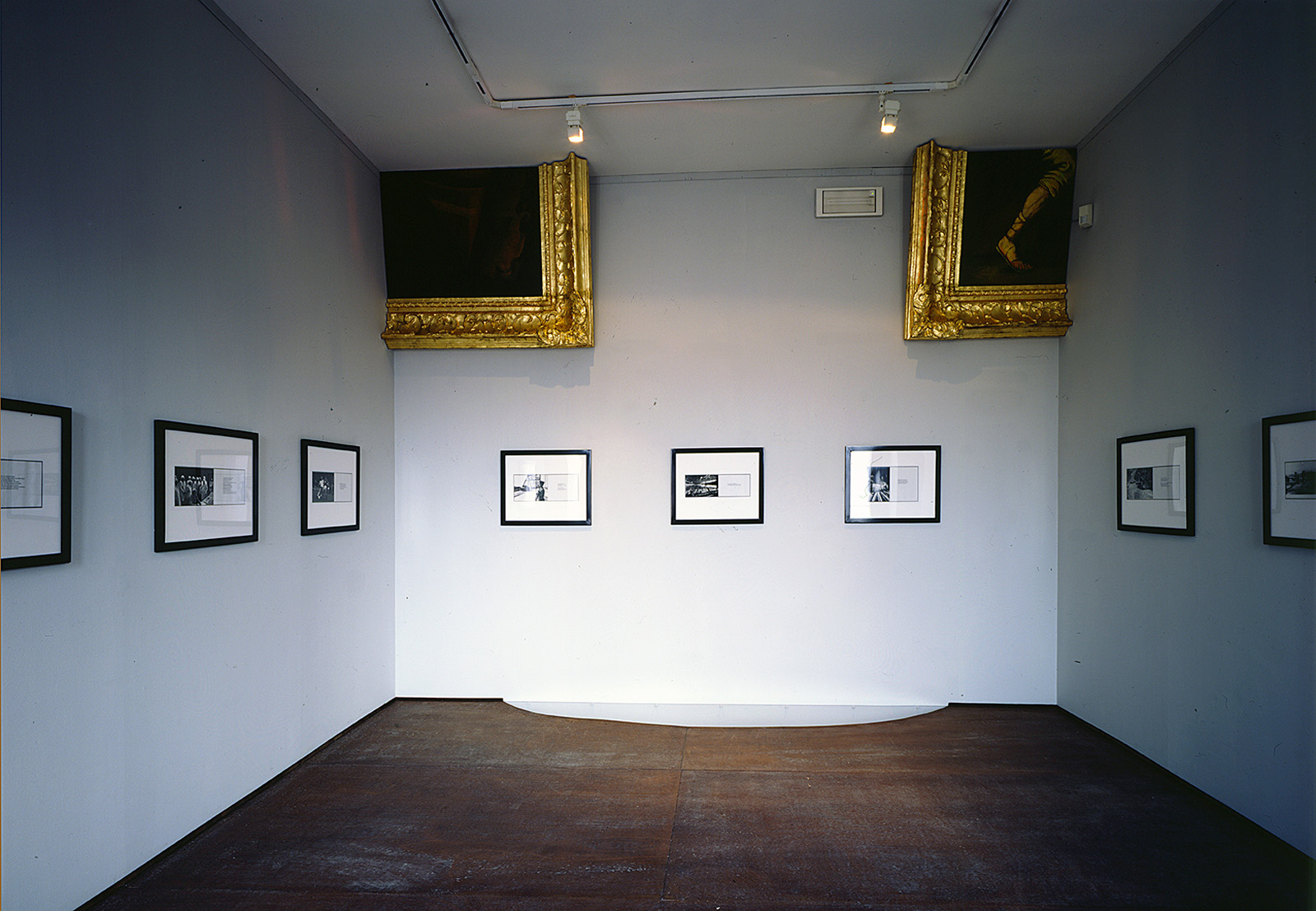Where is Our Place?
with Emilia Kabakov
YEAR: 2002
CATALOGUE NUMBER: 164
PROVENANCE
Collection MAXXI – Museo Nazionale delle Arti del XXI Secolo, Rome
NOTES
See CRB, no. 122, pp. 482–484. See CRP, vol. 2, nos. 439–457, pp. 162–190
EXHIBITIONS
Esposizione Internazionale d’Arte, La Biennale di Venezia (50th International Art Exhibition), Fondazione Querini Stampalia (Querini Stampalia Foundation), Venice, Italy
Sogni e Conflitti: La dittatura dello spettatore / Dreams and Conflicts: The Viewer’s Dictatorship, 50. June 12 to September 7, 2003
Mori Art Museum, Tokyo, Japan
イリヤ&エミリア・カバコフ 私たちの 場所はどこ? / Ilya & Emilia Kabakov: Where is Our Place?, May 29 to August 8, 2004
MAXXI – Museo Nazionale delle Arti del XXI Secolo, Rome (National Museum of XXI Century Art), Italy
Ilya and Emilia Kabakov: Where is Our Place?, November 3, 2004 to February 6, 2005
Musée Les Abattoirs, Toulouse, France
Ilya et Emilia Kabakov, “Où sommesnous?” (Where are we?), March 8 to June 5, 2005
MAXXI – Museo Nazionale delle Arti del XXI Secolo (National Museum of XXI Century Art), Rome, Italy
SPAZIO: Dalle Collezioni d’Arte e d’Architettura del MAXXI / Space: From MAXXI’s Collections of Art and Architecture, May 30, 2010, to January 23, 2011
MAXXI – Museo Nazionale delle Arti del XXI Secolo (National Museum of XXI Century Art), Rome, Italy
Non Basta Ricordare: Collezione MAXXI / Remembering Is Not Enough: MAXXI Collection, December 20, 2013, to October 5, 2014
Fundación PROA, Buenos Aires, Argentina
Arte en Escena: Obras de la colección MAXXI, Museo de Arte del Siglo XXI (Art on Stage: Works from the MAXXI Collection – National Museum of XXI Century Art), March 19 to June 12, 2016
MAM – Museu de Arte Moderna do Rio de Janeiro, Rio de Janeiro, Brasil
Arte em Cena, Coleção MAXXI Museo Nazionale Delle Arti Del XXI Secolo (Art on Stage: Works from the MAXXI Collection – National Museum of XXI Century Art ), July 5 to September 11, 2016.
Tel Aviv Museum of Art, Tel Aviv, Israel
Tomorrow We Fly, July 17, 2023 to March 2, 2024
DESCRIPTION
Two exhibits are simultaneously present, bumping into one another, in the space of the gallery: one from the end of the XIX century and a contemporary exhibition. Also present are two kinds of viewers: from the century before last and today. The first “viewers” are represented in the form of gigantic figures that are visible to us, today’s viewers, only up to their waist; the rest of them are not visible, as it disappears up above, beyond the ceiling. Such also are the paintings for these giants—they are painted in a classic (salon) style, encased in thick gold frames, but only their lower part is visible; the rest of it is located up above, beyond the ceiling, beyond our field of vision. “Our” contemporary exhibit consists of drawings and watercolors done in a “contemporary” style in modest wooden frames, hung in an ordinary way at eye level.
But the “relativity of everything” is not limited to this. If there is something larger than us, then, of course, there is something or someone that is smaller. Upon entering the hall of the gallery, the viewer sees that the surface of the floor turns out to be open in certain places along the wall, and the space of a different world opens up there, down below, beyond the thick glass, but it is a world that is many times smaller than ours. There, below the floor, you can see an intricate landscape consisting of mountains, hills, and fields, visible are huts, trees, entire settlements, and if you bend way down you can even see automobiles, animals, people—an entire world that we know nothing about, just like those giants who are only halfway visible to us know nothing about us… What serves as a floor for us is their sky, and “our” sky perhaps doesn’t even exist for the giants, is “not visible”…
CONCEPT OF THE INSTALLATION
Everything is rather relative—including our place in the world, and in particular, that very art which we are now displaying, that which is called contemporary. Art also existed in this very place but at another time, and in its time it had pretensions to eternal existence, as being an immutable image—but now our “contemporary” art has arrived on the scene and has unexpectedly replaced it… But the old has not disappeared and is constantly present, discrediting what the new generation is doing today …
The goal of this installation is to juxtapose these two things in a paradoxical way.
Images
Literature















